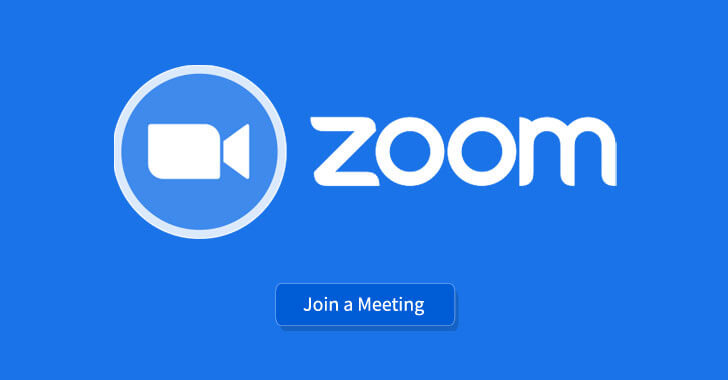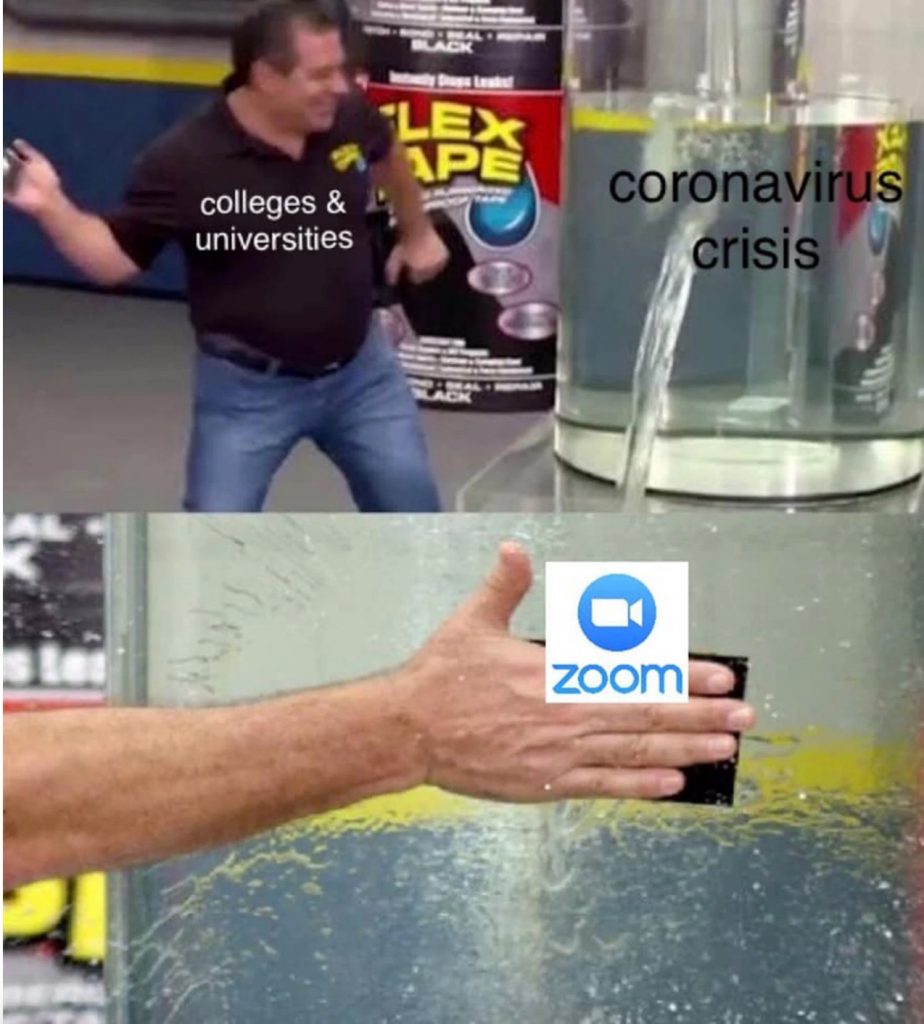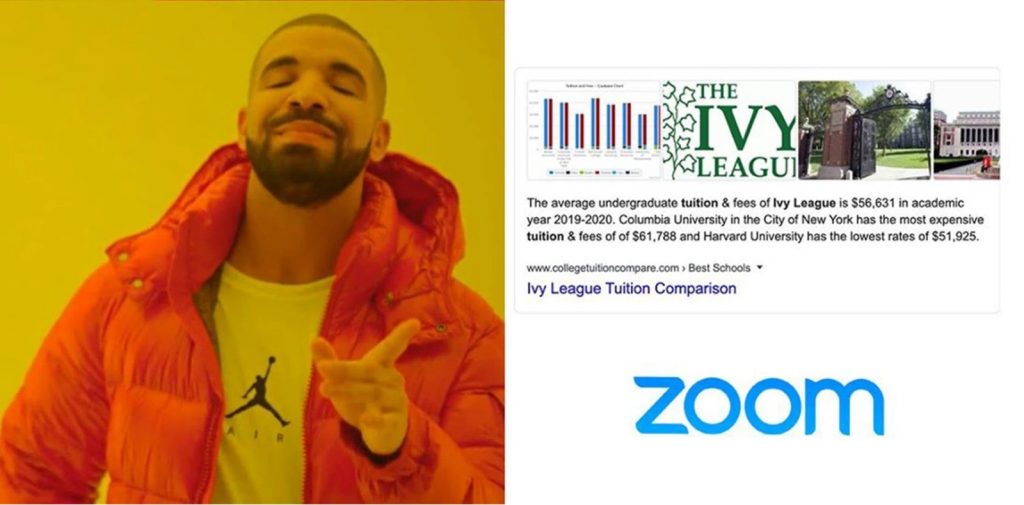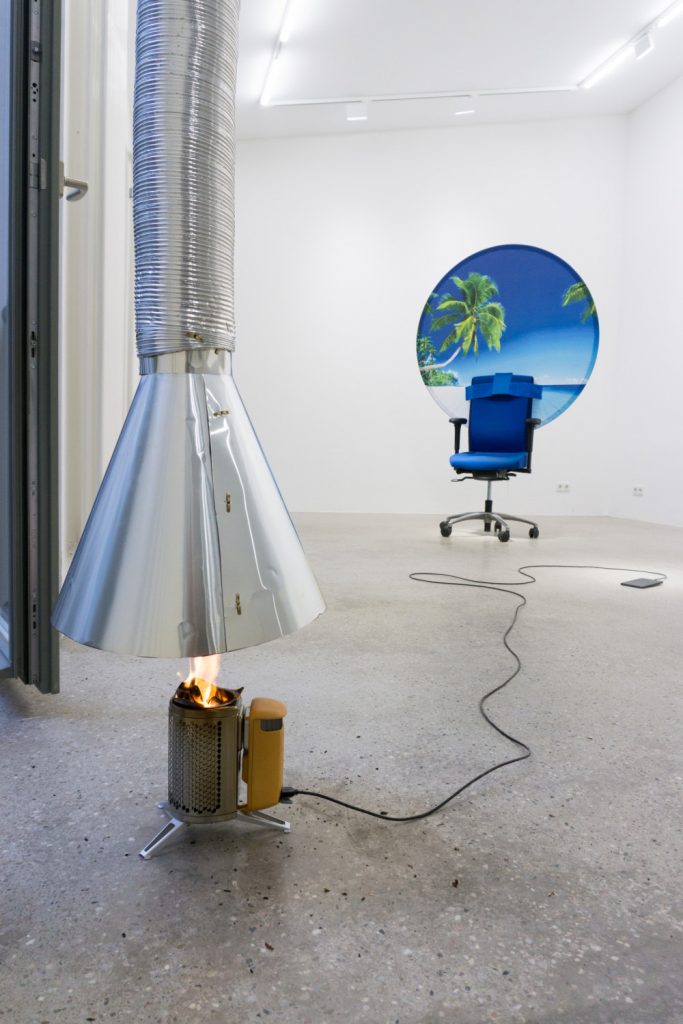Zoom-ing in on Online Education: Digital Infrastructure as an Extension

The year 2020 has brought about significant change in almost all areas of life as a result of the Coronavirus pandemic. According to Google Statistics, as of October 15th, 2020 more than 38.5 million people have been infected with the coronavirus disease, herein referred to as COVID-19. As millions of people have been mandated to stay home rather than frequent physical space, video conferencing services have become a perceived replacement for workspaces, social interaction environments, and even educational infrastructure (Associated Press).

As more extensively discussed in the introductory Zoom-based video, this particular platform has become a widely used tool for education, allowing for broadcast curriculum to become an expected element of learning during the pandemic. The teleconferencing company Zoom has seen a significant surge in use correlating with COVID-19, reporting 300 million daily meeting participants as of April 20th, 2020 in comparison to 10 million back in December (Warren). Zoom, originally a corporate tool, is a free cloud-based service that allows for virtual meetings (Zoom). Zoom is able to connect teachers to students in a real-time setting while being in different locations around the world (Zoom). This essay aims to evaluate exactly how infrastructurally Zoom has positioned itself in a pandemic with the perceived redundancy of physical institutions. Through examining theories of infrastructure and spatiality, with the connection to Marshall McLuhan’s extension theory, we argue that Zoom may not be the replacement it can be perceived as but rather an extension of existing and ‘broken’ infrastructure.
Method
This paper’s methodology is focused on three main points which provide the reader with a well-rounded standpoint. Firstly, the relevance of zoom is established in the current digital climate and its position in mid-pandemic times. Despite the fact that Zoom is used for multiple purposes and fields, this paper particularly examines Zoom’s implications on education. Secondly, the ‘in-material’ infrastructure of the ‘old’ situation is compared to Zoom’s infrastructural components. This is done by focusing on aspects such as location, spatiality, versatility, and connection.
In his renowned 1964 book Understanding Media, Marshall McLuhan argued for the necessity to view media as “extensions of man”. Indicating that every medium’s primary function is to amplify and extend a specific aspect(s) of that which mankind already encompasses (McLuhan 14), this notion has become central to understanding objects of new media. Moreover, media are deemed a means of understanding that which surrounds us; they mediate all means of communication (McLuhan 23), as opposed to emerging as entirely new objects in themselves. Utilising the example of language, McLuhan explains how this allows for the transmission and reception of information, something which expands on the human ability to communicate. As such, in order to examine the position of Zoom in the COVID-19 pandemic, the central approach of viewing the new media object as an extension of mankind and the lack of that which was previously present and fully accessible, physical institutions, is taken, as opposed to the idea that the service functions as an entirely novel, separate replacement for this.
Infrastructure
In order to properly comprehend Zoom’s position on an infrastructural level, this very notion of ‘infrastructure’ must be understood. As indicated by Shannon Matern, this concept focuses on that which media objects comprise of, elementally speaking (1). Seeing as such an approach is rather concrete, it can provide a foundation for more theoretical advances. Before understanding the functioning of Zoom’s infrastructure, its context must be understood. While this paper primarily focuses on the educational aspect, it is not exclusive to this sector. With the 2020 COVID-pandemic minimizing or completely disabling the ability of people around the world to attend classes in person, in physical buildings, the infrastructure of this gets exposed as it ‘breaks’ (Star and Bowker 231).
As described by Star and Bowker, this ‘breaking’ is an effective means of viewing this elemental nature of infrastructure. In this case, generally speaking, this “normally invisible quality” (Star and Bowker 231) exposes itself in its unavailability; whether due to travel restrictions, access restrictions or else. The inability to enter or reach physical institutions exposes, depending on the exact situation, that which is required infrastructurally to make this very notion of physical classes happen. Someone in The Netherlands relying on public transport to get to high school would be having a rather hard time doing so in April 2020. Firstly, with public transport functioning at minimal capacity, this relative lack of reachability exposes the necessity of this infrastructural aspect for that which was ‘normal’. Secondly, the schools being closed during this month would prevent one from entering the building altogether, with these restrictions exposing the requirement for someone to grant access to the school, whether that is on the level of the person holding the key or the person responsible for the COVID-19 measurements; it can all be found within this concept of infrastructure.
Moreover, this breaking of the infrastructure not only exposes that which was previously ‘invisible’; it also provides a newfound ‘gap’. This gap, to be found in this space of an inability to reach and utilise physical institutions, can be seen as being filled by Zoom. As such, the step backwards appears to be a condition for Zoom’s full functionality as an extension of man, and an explanation for the perceived nature of the service being a replacement for buildings. Moreover, the word ‘replacement’ hinges on a sense of finality; in this case one implying the redundancy of the ‘old’. Yet, somewhat paradoxically, when taking the COVID-19 measurements into account, the opposite of finality appears omnipresent: persistent attempts to ‘return to normal’ (Buheji and Ahmed 2) appear in stark contrast with Zoom’s perceived replacing of physical institutions.

Requirements
Besides this, it is important to be aware of the infrastructural properties of Zoom and weigh this against that of the old situation. Naturally, as indicated by the previous example of a Dutch kid trying to reach their school in a specific month, many different situations can arise. Nonetheless, it appears that the requirements for each situation can be broken down into roughly mirrored notions.
On the one hand, there is the ‘old’: the full ability to reach and utilise physical institutions for educational purposes. Here, the requirements can be seen as encompassing a means of getting to the institution and a means of getting inside. On the other hand, the ‘new’, during the COVID-19 lockdown and a full inability to reach and utilise physical institutions with a subsequent shift to Zoom-based classes, these requirements can be seen as shifting to having a device with an internet connection and having said internet connection within one’s reach. However, it is important to note that for both the ‘old’ and the ‘new’, these requirements themselves can expose a more detailed account of the infrastructure present. Depending on one’s individual situation, the means of getting there can depend on the access and functioning of a personally owned vehicle, the access to public transport, and so on. Similarly, the device with an internet connection is dependent on one’s financial state, access to shops, and so on. However, the one almost fully unchanged aspect is the notion of access; while having moved from a physical space to an online one, it remains unaltered that without the proper means of ‘entering’, one is left fully without education.
As shown here, while different requirements apply for different conditions, the core remains largely similar. This is argued by Star and Bowker (231) in the idea that infrastructure does not simply emerge: it is inherently built (up)on a previously existing one. As such, this new means of accessing the institution can be seen as being based on the previously established concepts of institutionalism. Seeing as this new means of accessing institutions is inherently novel, it can appear as if it is an entirely new form of infrastructure; something which has replaced the old. Rather, as depicted, it should be viewed as an adaptation of the usual and an extension of the, somewhat regressed, ‘present’. Encompassing similar properties of the old, Zoom’s infrastructural components roughly mirror the previous situation, albeit in a different space.
Spatiality
With regards to spatiality, the key questions we propose concern both the type of space Zoom affords, how users situate this space and themselves within it. Using Martina Löw’s definition, during the act of spacing “[Actors] not only put inanimate objects and non-human beings in relation to each other … , but also position their own bodies relative to those of others” (Berger 3). After positioning, a space is created by synthesizing objects and actors together, influenced greatly by perception, feelings and thoughts. Zoom introduces a virtual element to the process of spacing, which, when synthesized with the real, forms a hybrid-space:
Space is complemented by a virtual segment, although in this case the actors’ hybrid linked space is not comprised of the paramount reality and the space of a finite province of meaning, but of two distant segments of the world of everyday life, a physically present and a virtually represented one (Berger 17).
In the case of Zoom, these hybrid spaces are created when users who exist in a physical location interact with other users, who also exist in another separate physical location, in a virtual setting. It is through the concept of hybridity that we assert Zoom not as an alternative space but rather an extension of pre-existing space and infrastructure.
Hybrid Spaces
The use of hybrid spaces in education is not an unfamiliar topic as education infrastructure is rapidly embracing online spaces as an integral and necessary element of learning. As is purported by Paul Temple (2008), learning can no longer be perceived as tied to brick and mortar (Temple 229-241).
Hybrid pedagogy refers to learning that occurs in both physical and online spaces (Hilli 67). Although education within our current context is not tied to physical classrooms, the use of online spaces and learning has been used in conjunction with physical space previously. In the current context, this model is impossible to execute as physical spaces are inaccessible. However, hybrid learning asks us not only to see the physical place that learning is occurring as altered, but also to rethink our conception of place itself.
With an increase in use for professional sectors and within education, this October, Zoom announced a new feature, namely Immersive Scenes, which allows for custom backgrounds to be integrated into all participant videos such as classroom settings (O’Flaherty). Collaboration is that which hybrid learning approaches rely on in order to operate (Temple 71). This integration of physical spaces into online settings displays how Zoom is attempting to create authentic virtual spaces through collaborative effort, aiming for a new and shared approach to education within the constraints of virtual space.This notion is supported by Viktor Berger who asserts that “online spaces allow for a different kind of communication than face-to-face interactions, which affects both style and content” (Berger 2). It is important to note that, although Zoom offers a new experience of online learning, the tactics Zoom is pursuing aim at emulating the physical experience of in-person learning. Yet, as shown, this emulation is not a direct replica as much as it is an extension of the physical, attempting to capture the element of togetherness in a virtual space.
Lack of Authenticity
Part of the issue we take up with Zoom as a replacement rather than an extension lies within the question of authenticity. Despite the possibilities Zoom creates for online space, from a critical perspective, Zoom cannot be an outright replacement for physical spaces, especially in an educational context due to the lack of authenticity that users confront with regards to potential technical difficulties when using the platform. Although many features, such as the implementation of background images and the ability to have real-time conversations enhance the impression of ‘being together’ the technical nature of the platform cannot be ignored. Features like Immersive Spaces are a clear attempt by Zoom to enhance the authenticity of hybrid spaces, but as is noted by Almond Aguila, whose work concerns the feeling of togetherness on video conferencing platforms, “technical difficulties, visual distortions, distractions of attention or aversion to the software act to counter any sense of virtual presence,” (Aguila 308).
This critique can be exemplified through the work of Aram Bartholl, a digital artist who explores the relationships between net data/virtual spaces and everyday life (Bartholl). His work, “Life’s a Beach and then You Die” (see image 4) offers a playful critique on the authenticity and sentimentality of virtual spaces, suggesting that virtual spaces make a promise of representing the real, which in reality can be seen as unachievable. Similar to the backgrounds Zoom intends to incorporate to make users feel like they are situated somewhere else rather than their real physical location, Batholl’s work displays how the transportation is too transparent to be accepted as reality. It is becoming harder to distinguish between the virtual and the real with more integration of substantive uses of virtual spaces in everyday life, such as for education. However, projects like Bartholl’s aim to show exactly what we argue is the core flaw of platforms like Zoom in the perceived outright replacing physical infrastructure.

Although we may feel transported to a place where we are together, or feel more connected, we need the authenticity of the factual, concrete physical and without this authenticity, virtual space is likely to always feel like a detached experience where we are aware of the presence of the platform. This argument is best summarized by Berger: “because of the desires, fears and expectations that drive them elsewhere, actors never merge into the ‘here,” meaning they are not only “here,” but “there” as well, so that the visible is always undermined by the invisible,” (Berger 3).
It is evident that there are a multitude of factors that constitute the authenticity of a hybrid-space. Factors such as emotional commitment of the actors and technical difficulties of our devices render subjective experiences online. This combined with Zoom’s features such as Immersive Scenes, that actively seek to blur the lines between the real and the virtual, mean hybrid-spaces cannot be viewed as divalent. The concept of spatial synthesis is a delicate and subjective process where the ‘realness’ of a hybrid-space is achieved in some capacity. Because of this it is no longer useful to focus on the binary of spatiality in terms of ‘Zoom Vs Physical Space’. Zoom’s spatiality is not a replacement of the physical, but exists as a process of graduality. Zoom and the physical are combined through this synthesis to form hybrid-spaces that are situated on a scale of authenticity; extending, rather than replacing.
Conclusion
In conclusion, we argue for the necessity to view Zoom, on an infrastructural level, as an extension of prior physical infrastructure that is presently unavailable due to the COVID-19 pandemic. This contrasts the notion of Zoom as a perceived replacement for pedagogy. Firstly, the infrastructure of the old situation can be viewed as ‘broken’, subsequently exposing its very nature. Yet, comparing this to the infrastructural components of Zoom, striking similarities can be found, with the requirements of both situations mirroring one another. Whether one needs to get to a physical institution or can utilise Zoom to achieve the same goal of entering class, access is one of these key requirements. When we consider the concept of spatiality, and more specifically, the formation of hybrid spaces, the lack of true authenticity that is present due to Zoom’s digital affordances prevent it from replacing physical learning environments. As indicated by McLuhan, media objects can be seen as extensions of man. This theory is realised for Zoom infrastructurally, as it extends upon the inability to fully utilise physical institutions. As such, it is not a replacement for these spaces, but rather mirrors its properties while acting as an ancillary infrastructure.
Works Cited
Aguila, Almond. ‘Time and Space on Skype: Families Experience Togetherness While Apart’. Explorations in Media Ecology, vol. 10, no. 3–4, July 2012, pp. 303–12. IngentaConnect, doi:10.1386/eme.10.3-4.303_1.
Bartholl, Aram. Info – Aram Bartholl. https://arambartholl.com/info/. Accessed 20 Oct. 2020.
Berger, Viktor. ‘Phenomenology of Online Spaces: Interpreting Late Modern Spatialities’. Human Studies, May 2020. Springer Link, doi:10.1007/s10746-020-09545-4.
Buheji, Mohamed, and Dunya Ahmed. ‘Implications of Zoom and Similar Apps on “Flip-Class” Outcome in the New Normal’. International Journal of Learning and Development, vol. 10, July 2020, p. 1. ResearchGate, doi:10.5296/ijld.v10i3.17374.
Hilli, Charlotta, et al. ‘Designing Hybrid Learning Spaces in Higher Education’. Dansk Universitetspædagogisk Netværk, DUN, vol. 15, no. 27, Oct. 2019, pp. 66–82.
McLuhan, Marshall. Understanding Media: The Extensions of Man. McGraw-Hill, 1964. Google Books, https://designopendata.files.wordpress.com/2014/05/understanding-media-mcluhan.pdf.
O’Flaherty, Kate. ‘Zoom Beats Microsoft Teams, Google Meet With Game-Changing New Features’. Forbes, 14 Oct. 2020, https://www.forbes.com/sites/kateoflahertyuk/2020/10/14/zoom-beats-microsoft-teams-google-meet-with-game-changing-new-features/.
Press, Associated. ‘Zoom Booms as Teleconferencing Company Profits from Coronavirus Crisis’. The Guardian, 2 June 2020. www.theguardian.com, https://www.theguardian.com/technology/2020/jun/03/zoom-booms-as-teleconferencing-company-profits-from-coronavirus-crisis.
Star, S. L., and G. C. Bowker. How to Infrastructure. 2006, pp. 230–45. ResearchGate, doi:10.4135/9781446211304.n11.
Temple, P. Learning spaces in higher education: an under-researched topic. 2008. London Review of Education, 6 (3), 229–241
van Kesteren, Manja. ‘Coronavirus Measures Extended until April 28’. IamExpat, 31 Mar. 2020, https://www.iamexpat.nl/expat-info/dutch-expat-news/coronavirus-measures-extended-until-april-28.
Zoom. ‘Video Conferencing, Web Conferencing, Webinars, Screen Sharing’. Zoom Video, https://www.zoom.us/. Accessed 20 Oct. 2020.